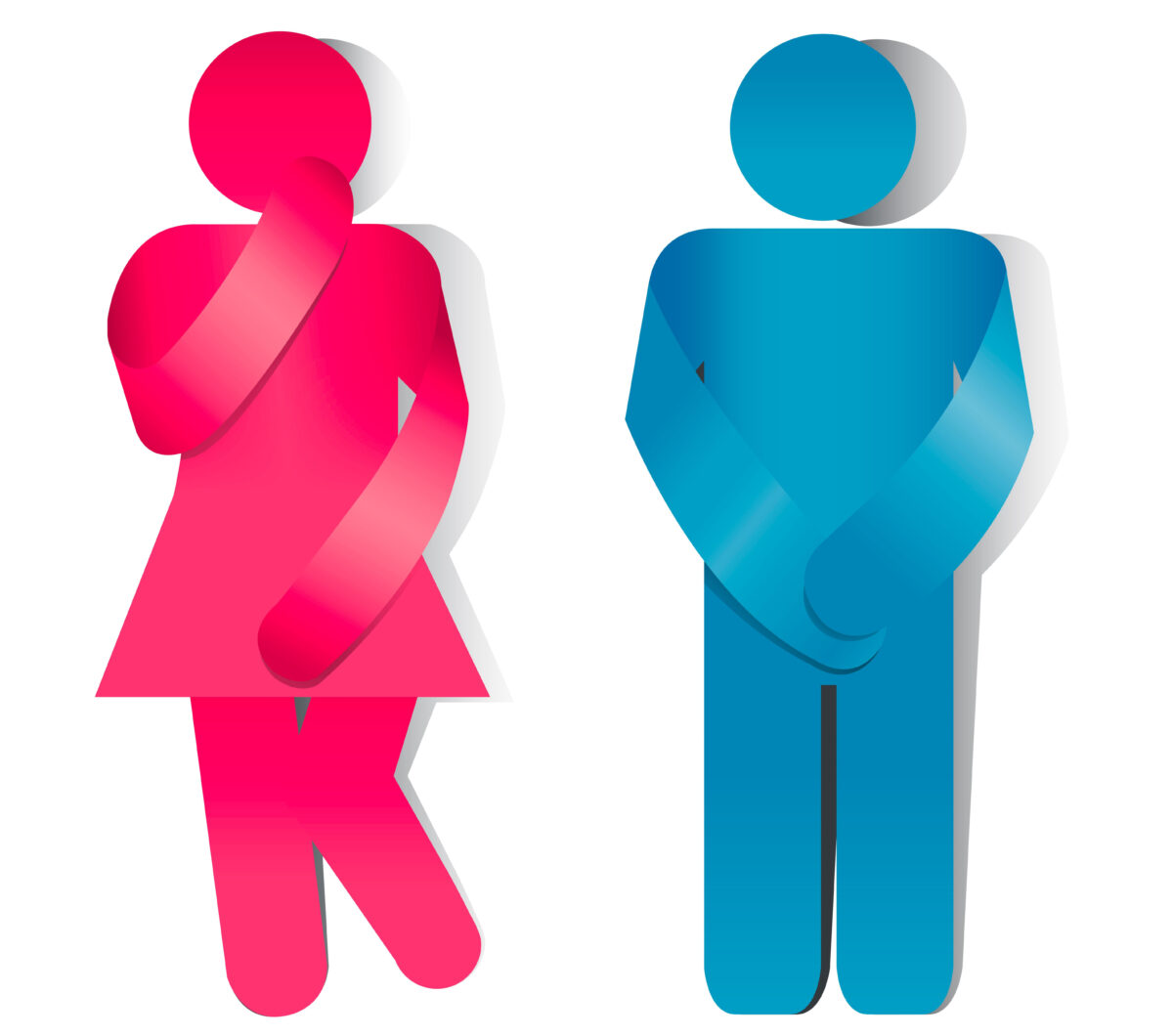


It’s been said that everyone enjoys a good laugh, but for a large percentage of people, those chuckles are accompanied by urine leakage. Yes, we’re talking about urinary incontinence—a health taboo that really needs to be erased for good—because-guess what? It’s common! According to the Urology Care Foundation, up to one-third of adults in the United States, young and old, experience urinary incontinence. Fortunately, there are steps you can take to help prevent, improve, and live with urinary incontinence.
Urinary incontinence (leakage) occurs for several reasons, one of which is because the muscles of the pelvic floor become weakened due to pregnancy, childbirth (especially multiple births), use of certain medications, being postmenopausal, or obesity. This type of urinary incontinence is known as “stress incontinence,” and typically occurs when there is pressure placed on the bladder, as when you cough, sneeze, laugh, lift, or exercise.
“Urge incontinence” (aka, overactive bladder) is associated with damage to muscles, nerves of the bladder, or other parts of the nervous system, infections, or the presence of bladder stones. Individuals with multiple sclerosis, diabetes, stroke, or Parkinson’s disease may experience urge incontinence, as can men who have undergone prostate surgery or who have a prostate condition such as enlarged prostate or prostatitis.
Yet another type is “overflow incontinence,” which is when you can’t empty your bladder and the urine dribbles. This type can be caused by weak bladder muscles, constipation, nerve damage, enlarged prostate, and certain medications.
If you are experiencing any type of urinary incontinence, there are numerous options available to help manage and control leakage. The most common and immediate answer is to use incontinence products—namely, pads or liners. The good news is that you can try other management techniques while you depend on the pads, with the hope you will be able to reduce or eliminate your need for them as you employ other methods of control.
The vast majority of incontinence pads on the market are not natural. In fact, most conventional pads consist of up to 90 percent plastic, which can be irritating and uncomfortable. The sensitive skin in the genital area cannot breathe through layers of plastic and the chemicals they contain. These products then also end up in landfills, where they continue their contamination of the environment.
Since incontinence pads are often a necessary part of managing this health challenge, it is strongly suggested you use organic, plastic-free, chlorine-free products that are also biodegradable (and compostable) to protect your health as well as that of the planet.
In addition to using pads, there are other approaches to managing urine leakage. For both stress and urge incontinence, one of the most popular methods is daily practice of Kegel exercises. Kegels can be done just about anytime, anywhere—because they require no movement except for contracting your PC (pubococcygeus) muscles. The PC muscles are the ones you use to stop urine flow when urinating. Practice squeezing your PC muscles and holding them for about 2 to 3 seconds (eventually increase to 5 seconds), then release. Wait about 10 seconds, then squeeze again. Repeat this cycle about 10 times and do a session two to three times daily.
Develop a routine so you remember to do your Kegels—perhaps before you get out of bed in the morning, at lunch, and then before you retire at night. Practice daily, and after several months, you should notice a significant difference in urinary control and leakage.
Millions of people live with urinary incontinence, and there are some safe, effective things you can do to help make it less challenging and help you live a more fulfilling, active life.
Republished from NaturallySavvy.com
◇ References:
Doheny K., Caffeine and bladder problems linked. WebMD 2010 Sept. 30
Panesar K. et al., Drug-Induced Urinary Incontinence. U.S. Pharmacist 2014; 39(8): 24-29
